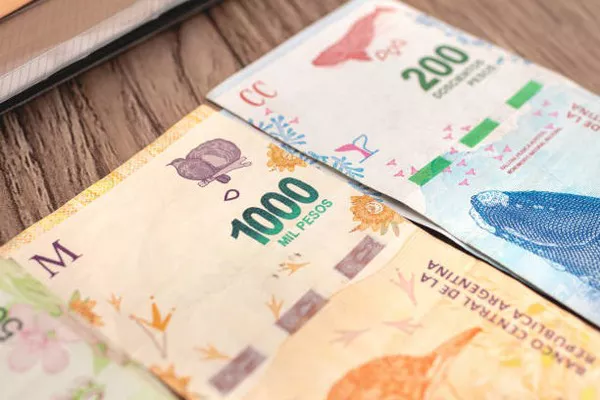The Argentine Peso (ARS) stands as a symbol of Argentina’s economic history, resilience, and monetary identity. In this in-depth exploration, we delve into the Argentine Peso Currency, examining ARS rich history, distinctive symbol, currency codes, and the various denominations that shape its physical form. From its tumultuous past to its current role in the global financial landscape, the Argentine Peso unfolds as a fascinating chapter in the world of currencies.
Argentine Peso Currency History
The journey of the Argentine Peso is a tale woven with economic highs and lows, political upheavals, and a constant quest for stability. Understanding its historical evolution is key to grasping the currency’s significance in the contemporary financial landscape.
Argentina introduced its first national currency, the Argentine Real, in 1826, reflecting the country’s early steps towards economic independence. However, it was the introduction of the Argentine Peso Moneda Nacional in 1881 that marked a pivotal moment. This currency, initially pegged to the British Pound, set the stage for Argentina’s monetary identity.
Over the years, Argentina experienced fluctuations in its economic fortunes, leading to several currency changes. In 1983, following a period of hyperinflation, the country introduced the Argentine Austral. Yet, economic challenges persisted, and in 1992, the government embarked on a currency reform, introducing the Argentine Peso (ARS) as the official currency once again.
The early 2000s witnessed a significant crisis in Argentina, with the country defaulting on its debt. The impact on the Argentine Peso was profound, leading to devaluation and a surge in inflation. These events shaped the currency’s history and influenced its role in the global monetary landscape.
Argentine Peso Currency Symbol
Symbols carry immense cultural and historical weight, and the Argentine Peso is no exception. The currency is represented by the symbol “$,” a recognizable icon in the world of finance. The symbol has deep-rooted connections to the currency’s history and the economic shifts Argentina has undergone.
The “$” symbol signifies the Peso’s link to the Spanish Dollar, also known as the “piece of eight,” a currency widely used during the Spanish Empire. The adoption of this symbol reflects Argentina’s historical ties to Spanish colonialism and its subsequent influence on the country’s economic identity.
As a universally recognized currency symbol, the “$” transcends borders and languages, making the Argentine Peso a distinctive player in the global currency arena.
Argentine Peso Currency Codes
Currency codes serve as a standardized language in the financial world, enabling seamless communication across borders. The Argentine Peso is no exception, with its designated currency codes providing a clear identifier in international transactions.
The official currency code for the Argentine Peso is ARS. This three-letter code is in accordance with the ISO 4217 standard, ensuring consistency in financial communication globally. The use of “ARS” distinguishes the Argentine Peso from other currencies and facilitates accurate representation in financial systems, trading platforms, and banking operations.
Understanding the currency code is essential for financial institutions, businesses, and individuals engaged in cross-border transactions involving the Argentine Peso. It streamlines processes, reduces ambiguity, and contributes to the efficiency of the international financial landscape.
Argentine Peso Denominations
Beyond its digital representation in financial systems, the Argentine Peso exists in tangible form, with various denominations gracing the currency notes and coins circulating in the country. These denominations reflect the practical aspects of daily transactions, offering a glimpse into Argentina’s economic landscape.
Currency Notes:
$2: Featuring iconic Argentine figures such as Juana Azurduy, this note is a testament to the country’s historical and cultural heritage.
$5: Depicting the vibrant and diverse ecosystems of Argentina, this note highlights images of native animals and landscapes.
$10: Celebrating the contributions of the illustrious Eva Perón, this note pays homage to a key figure in Argentina’s political history.
$20: Showcasing the Guanaco, a native South American animal, this note captures the rich biodiversity of Argentina.
$50: Featuring images of Malvinas (Falkland) Islands, this note commemorates the Argentine claim to the disputed territory.
$100: Depicting the iconic Rhea bird, this note celebrates Argentina’s unique fauna.
Coins:
$1 and $2 Coins: Featuring national symbols such as the Sun of May, these coins are integral to everyday transactions.
$5 and $10 Coins: Bearing images of significant historical figures, these coins contribute to the diverse numismatic landscape.
$25 Coin: A commemorative coin, celebrating the 25th anniversary of the return to democracy in Argentina.
Exploring these denominations offers insights into Argentina’s cultural heritage, historical narratives, and the values the country holds dear.
Conclusion
The Argentine Peso stands as a testament to Argentina’s complex economic history, marked by resilience, challenges, and an unwavering identity. From its roots in Spanish colonialism to its modern role in global finance, the Argentine Peso continues to navigate the ebb and flow of economic tides.
As a symbol of national pride, a participant in international trade, and a reflection of Argentina’s cultural richness, the Argentine Peso holds a distinctive place in the world of currencies. Its journey, marked by historical twists and turns, encapsulates the spirit of a nation forging ahead in the global economic landscape.


